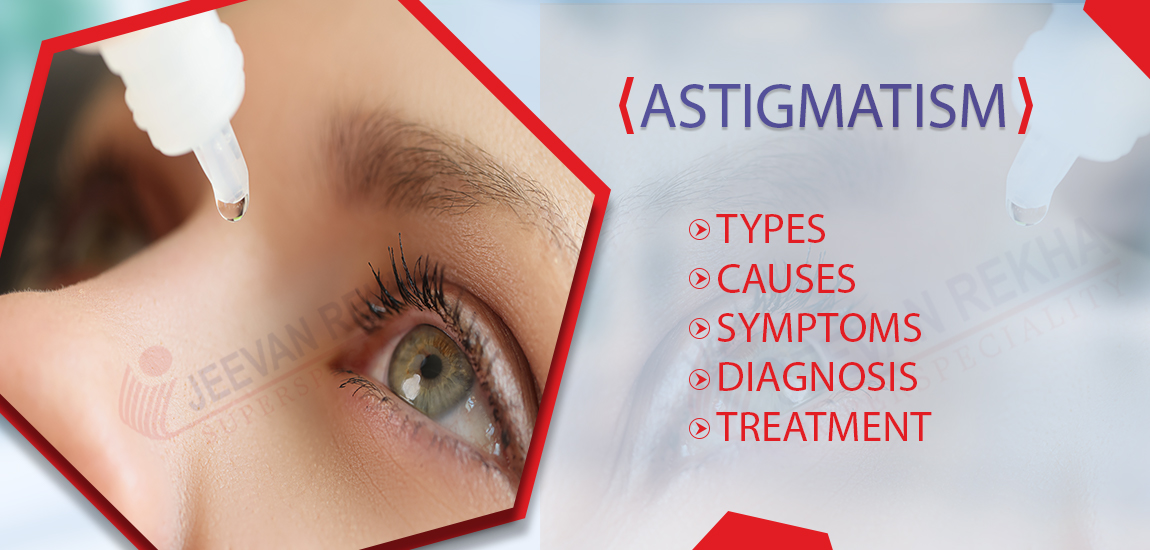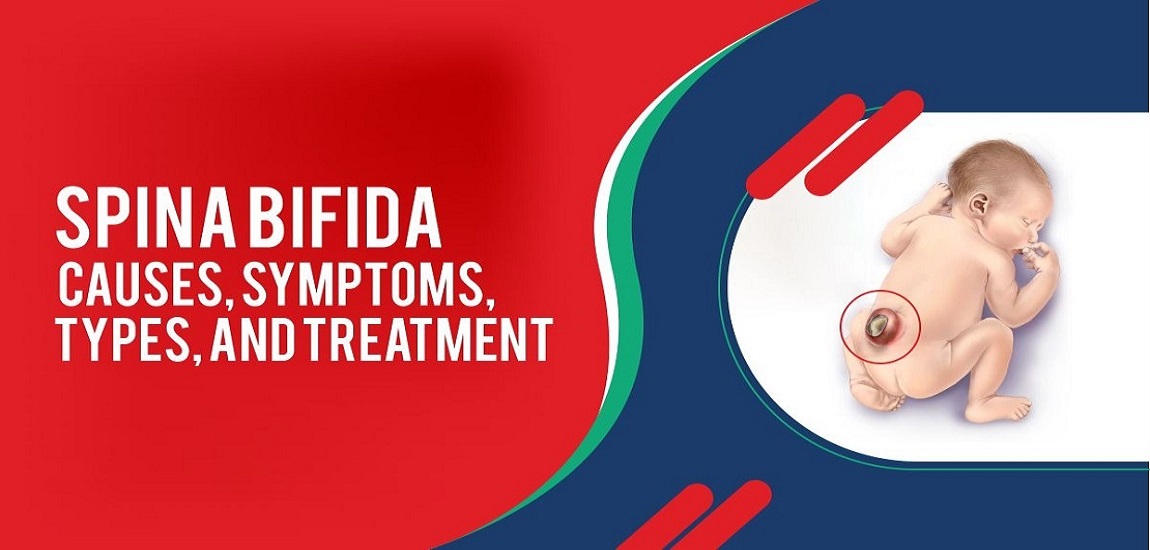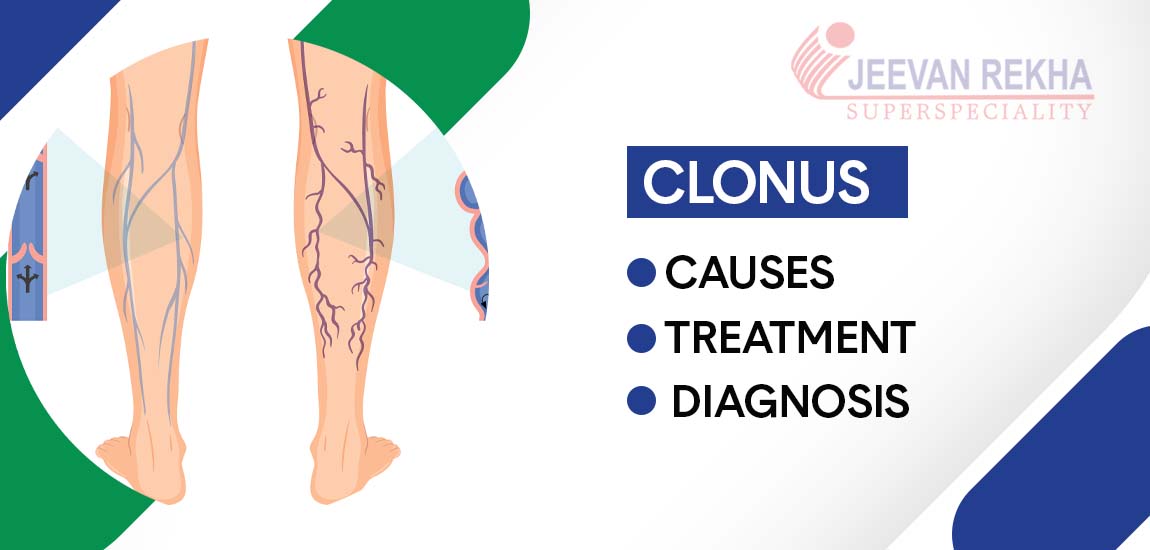
- By JRSH Admin
- In Health and Tips,
- Posted February 24, 2024
Astigmatism: Types, Causes, Symptoms, Diagnosis, and Treatment
What is Astigmatism?
Astigmatism is a common refractive error in the eye that occurs when the cornea or lens has an irregular shape, leading to blurred or distorted vision. Instead of having a spherical shape like a basketball, the cornea or lens with astigmatism is more like a football, with varying degrees of curvature in different meridians.
This uneven curvature causes light to focus on multiple points in the eye, resulting in blurred or distorted images. Astigmatism can be present independently or in conjunction with other refractive errors such as nearsightedness (myopia) or farsightedness (hyperopia).
Corrective lenses, such as glasses or contact lenses, are commonly used to alleviate the visual symptoms associated with astigmatism. In some cases, refractive surgery may be considered as a more permanent solution. Regular eye examinations by an optometrist or ophthalmologist can help diagnose and address astigmatism.
Types of Astigmatism:
Astigmatism can be categorised into different types based on its characteristics and causes. The main types of astigmatism include:
- Regular Astigmatism: Regular astigmatism occurs when the principal meridians (the two main curves of the cornea or lens) are perpendicular to each other, forming a regular pattern.
- Irregular Astigmatism: Irregular astigmatism is less common and occurs when the cornea or lens has uneven curvatures that are not in a regular pattern. This can result from conditions such as corneal scarring or certain eye surgeries.
- Myopic Astigmatism: Myopic astigmatism occurs when one or both principal meridians of the eye are nearsighted. This means that light entering the eye is focused in front of the retina, leading to blurred distance vision.
- Hyperopic Astigmatism: Hyperopic astigmatism occurs when one or both principal meridians of the eye are farsighted. In this case, light entering the eye is focused behind the retina, causing difficulty with near vision.
- Mixed Astigmatism: Mixed astigmatism involves one principal meridian being nearsighted while the other is farsighted. This results in blurred vision both at a distance and up close.
- Regular With-the-rule Astigmatism: In this type, the steepest meridian is oriented vertically, which is commonly referred to as "with-the-rule" because the meridian aligns with the vertical axis.
- Regular Against-the-rule Astigmatism: In this type, the steepest meridian is oriented horizontally, opposite to the vertical axis. This is known as "against-the-rule" astigmatism.
- Regular Oblique Astigmatism: Regular oblique astigmatism occurs when one principal meridian is steeper than the other but is not aligned with either the vertical or horizontal axes.
Causes of Astigmatism:
Astigmatism is primarily caused by irregularities in the shape of the cornea or lens of the eye. The specific causes can include:
- Corneal Shape: Irregularities in the curvature of the cornea, such as a football-shaped cornea instead of a spherical one, can lead to astigmatism.
- Lens Abnormalities: Changes in the shape of the eye's crystalline lens can also contribute to astigmatism.
- Genetics: Astigmatism frequently has a hereditary component, which means that it can occur in families.
- Eye Injuries or Surgeries: Trauma to the eye or certain eye surgeries can result in irregular astigmatism.
- Keratoconus: A condition where the cornea progressively thins and bulges outward, leading to astigmatism.
- Changes with Age: Astigmatism can develop or change as a person ages.
- Eye Conditions: Certain eye conditions, such as corneal scars or degenerations, can cause irregular astigmatism.
- Environmental Factors: Prolonged and intense use of the eyes for tasks like reading or computer work may contribute to eyestrain but is not a direct cause of astigmatism.
Also read: Brown Spot on Your Eye
Symptoms of Astigmatism:
Common symptoms of astigmatism include:
- Blurred Vision: Objects may appear blurry or distorted at various distances.
- Eyestrain: Prolonged visual tasks, such as reading or computer work, can lead to eye discomfort and fatigue.
- Headaches: Astigmatism-related eyestrain may cause headaches, especially after prolonged periods of visual concentration.
- Squinting: Individuals with astigmatism may squint to try to improve focus and clarity.
- Distorted or Ghosting Images: Double vision or ghosting of images may occur, particularly in low-light conditions.
- Difficulty with Night Vision: Astigmatism can impact the ability to see clearly in low-light environments.
- Frequent Changes in Prescription: Individuals may experience frequent changes in their eyeglass or contact lens prescriptions.
- Eye Discomfort: Some people with astigmatism may feel general discomfort or irritation in the eyes.
Also read: Cataracts - Symptoms, Causes, Prevention and Treatment
Risk Factors of Astigmatism:
Common risk factors associated with the development of astigmatism include the following:
- Eye Injuries: Trauma to the eye, especially if it affects the cornea, can contribute to astigmatism.
- Eye Surgeries: Certain eye surgeries, particularly those involving the cornea, may increase the risk of astigmatism.
- Keratoconus: Individuals with keratoconus, a condition where the cornea progressively thins and bulges, are at a higher risk of developing astigmatism.
- Age: Changes in the shape of the cornea and lens with age can lead to the development of astigmatism.
- Eye Conditions: Conditions such as corneal scars, degenerations, or other irregularities can be associated with an increased risk of astigmatism.
- Environmental Factors: Prolonged and intense use of the eyes for specific tasks may contribute to eyestrain but is not a direct cause of astigmatism.
Diagnosis of Astigmatism:
The diagnosis of astigmatism typically involves a comprehensive eye examination conducted by an eye care professional, such as an optometrist or ophthalmologist. Some of the components of the examination might be as follows:
- Visual Acuity Test: Your ability to see at different distances is evaluated using this common eye chart test. It helps determine the clarity of your vision and identifies any potential refractive errors, including astigmatism.
- Refraction Test: A phoropter or an autorefractor is used to measure the way light enters your eyes, helping to determine the degree and type of astigmatism.
- Keratometry: This test measures the curvature of the cornea, providing information about its shape. Keratometry helps identify astigmatism and its severity.
- Corneal Topography: This advanced imaging technique creates a detailed map of the cornea's surface, helping to diagnose irregular astigmatism and conditions like keratoconus.
- Retinoscopy: This technique involves shining a light into your eyes and observing the reflection to estimate your eyeglass prescription.
- Slit-Lamp Examination: A slit lamp is used to examine the anterior segment of the eye, including the cornea. This helps the eye care professional assess the overall health of the eye and identify any abnormalities contributing to astigmatism.
- Autorefractors and Aberrometers: These automated instruments provide additional objective measurements of refractive errors and can assist in refining the prescription.
- Subjective Refraction: The eye care professional will use the information gathered from the tests to fine-tune your prescription through a process of subjective refraction. This involves asking you to provide feedback on the clarity of images.
Also read: Cystinosis: Symptoms, Causes, Diagnosis, Treatment and Complications
Treatments of Astigmatism:
The most common treatments for astigmatism aim to correct the refractive error and improve visual clarity. The primary options include:
- Eyeglasses: Prescription eyeglasses with specially crafted lenses can compensate for the irregular shape of the cornea or lens, helping to focus light properly onto the retina. Eyeglasses are a non-invasive and effective way to correct astigmatism.
- Contact Lenses: Toric contact lenses are designed specifically for astigmatism. They have different powers in different lens meridians to address the cornea's varying curvatures. Contact lenses provide a more natural field of vision compared to eyeglasses.
- Refractive Surgery: Surgical procedures can reshape the cornea to correct astigmatism. Common types of refractive surgery for astigmatism include:
- LASIK (Laser-Assisted In Situ Keratomileusis): This procedure uses a laser to reshape the cornea, correcting the refractive error.
- PRK (Photorefractive Keratectomy): Similar to LASIK, PRK involves reshaping the cornea's surface to correct astigmatism.
- LASEK (Laser Epithelial Keratomileusis): LASEK combines elements of LASIK and PRK.
- Orthokeratology (Ortho-K): This non-surgical option involves the use of specially designed rigid gas-permeable contact lenses worn overnight. The lenses temporarily reshape the cornea, providing clearer vision during the day.
- Astigmatic Keratotomy (AK): In certain cases, small incisions may be made in the cornea to reshape it and correct astigmatism. This surgical procedure is less common today due to the popularity of laser surgeries.
Complications of Astigmatism:
Astigmatism itself is a common refractive error and, in general, does not lead to severe complications. However, uncorrected or improperly managed astigmatism can contribute to certain issues and impact overall eye health. Complications and associated concerns may include:
- Blurred Vision: Uncorrected astigmatism can result in persistent blurred or distorted vision, affecting the ability to see clearly at various distances.
- Eye Strain and Discomfort: Astigmatism can lead to eye strain, discomfort, and headaches, particularly during prolonged periods of reading or using digital devices.
- Reduced Visual Performance: Individuals with uncorrected astigmatism may experience challenges in tasks that require precise vision, such as driving or reading.
- Decreased Night Vision: Astigmatism can contribute to difficulties in seeing clearly in low-light conditions, potentially affecting night driving.
- Amblyopia (Lazy Eye): In some cases, astigmatism, especially if present from an early age, may contribute to amblyopia, a condition where one eye doesn't develop normal vision.
- Increased Risk of Myopia (Nearsightedness) or Hyperopia (Farsightedness): Astigmatism may coexist with other refractive errors, leading to a combination of vision issues.
- Reduced Quality of Life: Uncorrected astigmatism can impact a person's overall quality of life, affecting daily activities and causing frustration or discomfort.
Tags
Blog Search
Latest Posts
-
Dark Circles Under The Eyes: Causes, Home Remedies and Treatments
December 21, 2025 -
बर्ड फ्लू के लक्षण, कारण, उपचार और बचाव के उपाय जानें
December 04, 2025 -
Best Diet Plan for Menopause Weight Management
November 25, 2025 -
Pulmonary Fibrosis Treatment: Understanding Lung Scarring and Breathing Problems
November 21, 2025 -
Arrhythmia: Types, Causes, Symptoms, and Treatment
November 07, 2025




